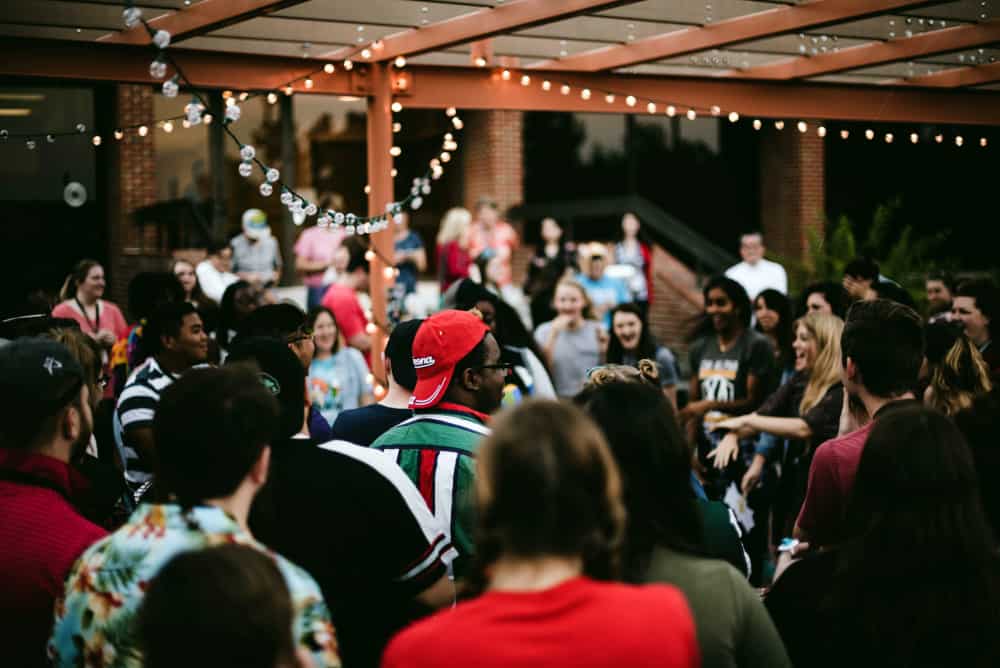Half a million college students in recovery are coming your way.
Consider the facts for a college student in 2021.
Nearly half a million college students identify as already in recovery from alcohol or drugs.
At least 12.52% of current college students meet the criteria for a significant substance use disorder
Approximately 1 in 3 incoming college students report struggling with mental illness.
Each year, we lose over 150,000 Americans to overdose, suicide, and addiction-related disease.
And yet, less than 5% of universities offer collegiate recovery programs or other recovery support.
SAFE Project was founded by two parents who lost their son on his fourth day of college, before he had even attended his first class. Despite spending the previous years pursuing treatment and recovery, an overdose ended his life. Later they learned that their son kept naloxone, the overdose reversal drug, in his dorm, but his roommate did not know how to use it.

Shift to Student-Ready Campuses
College campuses can have a significant impact in addressing the addiction and mental health crisis – particularly in the shadow of COVID-19. In 2020 alone, more than 93,000 Americans lost their lives to a drug overdose, a 33% increase compared to the previous year. If we expect the outcomes, from addiction to depression, to be at all comparable to the Great Recession, we are just recently coming to understand the devastating increases in mental illness and addiction that remain from that crisis over a decade later. Are campuses ready for the impact of these struggles on our current and future students?
Since 2016, university administrators have endeavored to create “student-ready” campuses to ensure success. This change — driven by the financial realities as well as the inequities of our secondary education system — is a shift from pursuing “ideal” college-ready students toward creating campuses that can bridge the gap between how students enter college and what support they need to graduate. The push for student-ready campuses requires a commitment to training, support, and resources, as well as a responsiveness to student needs beyond academia. The underlying belief: an investment in the whole person leads to a brighter future for all.
There are many universities working tirelessly to research and develop prevention, intervention, and treatment practices to serve their students and communities. Often missing is a recognition of the role of recovery. SAFE Project has advised nearly 300 campuses seeking to make positive change in bridging this gap. These colleges recognize that recovery is a valuable asset to campuses, communities, and families. Recovery is a journey that can require a lifetime of maintenance, yet the majority of students in recovery are offered little or no support for sustaining the positive changes they have made – the very changes that allowed them to pursue their education and that benefit their university every day.
While collegiate culture has traditionally celebrated, romanticized, and exacerbated unsafe substance use and mental health behaviors, collegiate recovery programs and supports make higher education accessible for those who struggle with a substance use or mental health disorder. These programs utilize the transformative impact of peer support to create healing and connection-focused services, education about life-saving tools at their disposal, as well as non-destructive new traditions on campus.

A Transformative Impact
It is our belief that every university could benefit from programming, resources, and intentional focus on serving students who seek recovery, have been impacted by addiction, or have an interest in developing new cultures around collegiate mental health and substance use. Students should not be forced to choose between their recovery and education. Whether it’s substance use or mental health challenges, these struggles can derail a student’s success and well-being. They can claim a student’s life. Yet, we have seen countless students disposed of by systems that limit their focus to preventing initial use, intervention, and punishment.
The growth of collegiate recovery is often driven by students and professionals moving from universities with collegiate recovery initiatives to universities without them, and feeling the need to fill in that sudden gap in their support system. This work is expansive and impactful, but as we continue to lose more and more Americans to addiction each year, we must not wait for universities to be reactively compelled by the loss of a student, but rather proactively meeting our students in the present day – where all are touched by addiction.
Most collegiate recovery consists of students who support each other and grow together, with many of those initiatives having dedicated space and staff. As of 2017, 87.4% of collegiate recovery supports focus on peer support, 74.0% focus on social activities and sober fun, and 34.7% focus on counseling or clinical support. Universities that are recovery-ready have found that these students have greater outcomes than the average of their student body regarding GPA, retention, and graduation rates. Students who feel accepted enough to be open about their recovery often take leadership positions among student government, student wellness organizations, and employment opportunities.

“We Don’t Have Those Kinds of Students”
Despite these positive outcomes, advocates for college-based recovery initiatives often face stigma-driven excuses as to why the university shouldn’t accommodate students in recovery, such as, “We don’t have those kinds of students here.” For every 10,000 students a university serves, there are 220 students who self-identify as in recovery. Additionally, an estimated 147 students are actively seeking support for significant substance use challenges. If they are lucky enough to receive a referral to a treatment center they can afford, they will likely return to a campus with no recovery support in place.
At SAFE Project, our Campuses team seeks to create recovery cultures that are directly guided by student voices. At the heart of this work are two beliefs – first, that addiction is driven by trauma, and second, that connection is the opposite of addiction. So, the efforts we assist only require that they are trauma-informed and community-focused. Every additional policy, procedure, and programmatic feature is intended to be developed creatively by the community, for the community. This approach allows us to be nimble, innovative, and effective at empowering the development of new programming models that impact individuals, campuses, and communities.

Colleges and universities can positively contribute to the healing of our nation from this devastating addiction crisis, or continue to ignore the invisible impacts of addiction that each of our students carry with them. Universities serve as beacons of possibility for so many communities. Their impact extends far beyond the bounds of campus. Refusing to support a generation so deeply impacted by addiction is a loss for all of us.
The author: Dylan Dunn is the Acting Senior Director at SAFE Campuses which offers the annual Collegiate Recovery Leadership Academy, National Internship Program, Collegiate Recovery Summer Webinar Series, the Reconnected app, ongoing educational opportunities, and continued direct technical assistance. As of August 2021, 297 collegiate institutions have been impacted by these services.
